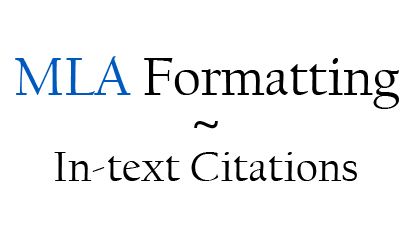The creation of memes is a complex process where people share what they feel by using funny pictures and appropriate messages. By considering the definition of memes, these funny pictures mean images and messages that people share on social media. The Internet memes cover important topics that are actual or popular in society. In the past, the creation of memes was not developed well because of the low state of technology. However, contemporary memes include different types, such as classical, trending, series, specific, and unexpected pictures. These memes cover specific fields and interests where people make art. Moreover, the popularization of memes is possible because humans are the artists of the cultural changes and their lives. Therefore, the creation of memes is an art where people share their messages on actual and interesting topics thought pictures.
Introduction
Nowadays, the creation of memes is popular in the whole world because social media users share what they see things and what they want to message. People use Internet memes to cover actual and interesting concepts that exist in society. In fact, the creation of memes is a fanny process because people use specific images and draw messages to share their ideas via social media. As a result, others can enjoy the art of memes because life is not simple, and users want to see something funny and interesting. There are different types of Internet memes, including classical, trending, series, specific, and unexpected works. Therefore, the creation of memes means the development of the culture of humans in society by focusing on interesting aspects and sharing thoughts with others.
The Definition of Memes

Internet memes are popular on social media because of their content. In particular, memes mean not only the types of papers where people write their messages but also funny images that they take from photos, movies, television, and other sources on the Internet with specific messages (Shifman 15). It means that Internet memes and their development are based on human creativity, and people want to share their feelings about what they post. Therefore, the definition of memes includes funny pictures with specific messages where people share their creative thoughts and information through social media.
The History of Creating Memes
The invention and creation of Internet memes take their roots in the 21st century. Originally, the term “meme” was proposed by Richard Dawkins who described this word in his book “The Selfish Gene” published in 1976 (38). In the book, Dawkins tried to use this word to explain the tendencies of cultural changes in industrial society. However, the creation of memes was not shared via the Internet in those times because this technology was not developed well. When the network was shaped and implemented in society, another scholar, Mike Godwin, shared a new term, “Internet meme,” in Weird, published in 1993. Godwin added the word “Internet” to indicate the environment where memes became popular (Bertazzoli 128). Before it, memes were shared via emails and print papers. Thus, Internet memes became popular because of changes in society and the implementation of network technology.
Creation of First Memes
Since the Internet technology and other digital tools were not developed well, the creation of the first memes meant 2-bit images. In particular, the growth and popularization of video made it possible to shape the graphics used in the computer and other devices (Shifman 44). It means that the quality of pictures was not as good as people could see in the modern network environment. However, the creation of Internet memes at the end of the 21st century represented the interests, actual topics, tendencies, technological development, and other cultural factors that existed in society. Therefore, the first memes were simple images that did not have high quality, but these funny pictures covered key aspects of society.
Creation of Modern Memes
In the contemporary world, memes play a huge role in human society because these pictures represent the state of technological development and cultural heritage. For instance, scientists, engineers, programmers, and other developers shaped the technologies in the speed of the Internet connection, popularization in the whole world, physical elements of computers, graphics, and other aspects that created a modern meaning of global network (Shifman 151). In this case, people from the whole world can access any place and check any information from different parts of Earth. This tendency popularizes the use of the Internet because people want to be connected. Hence, modern memes represent the main aspects of a global society where people share what they want to show.
Types of Created Memes
All memes include humor in messages and in pictures. Firstly, classical memes cover old pictures, but these images include messages on modern topics (Shifman 17). In this way, there is a cultural connection between the past and modern types. Then, trending memes are pictures that are original in short periods (Shifman 17). In this case, the message is original for a short time because of other funny images. Further on, the creation of memes in the series looks like comics (Shifman 18). Basically, the picture can be used for different purposes and messages. Next, the creation of specific memes covers a target audience where people are familiar with the content (Shifman 19). For instance, programmers may create pictures of their codes and write funny messages. Finally, unexpected memes mean cases where someone fails while these pictures represent human feelings (Shifman 20). Hence, people use their feelings to create memes.
Popularizing the Creation of Memes
Internet memes and its types become popular in the modern network environment because these pictures are funny and represent what people want to feel. In particular, the creation of memes means the art of human thoughts (Shifman 177). People cannot take a random picture and write something that others will not understand. Such pictures do not make sense, and people do not like to check these memes. In turn, social media includes many pictures that can be used for different purposes because if its representative meaning (Shifman 179). People take their lives, thoughts, words, computers, graphics, and applications, and create memes that represent the same stories of others. Therefore, the popularization of Internet memes is not only because of the development of the digital era but also because of human art.
Conclusion
In conclusion, the creation of memes takes a long history of development. Originally, the word “meme” was used to describe the changes in the industrial world. Then, by considering the development of networks, people began to use Internet technology to share their memes. Further on, first memes did not cover a term of quality, but pictures represented actual changes in the past society. Moreover, modern memes exist not only because of the development of the Internet and digital technologies but also cultural changes in human society. In turn, there are different types of funny pictures, such as classical, trending, series, and specific and unexpected memes, that are popular in society. Thus, the creation of memes is a result of changes in technologies and society, where people can share what they want to show by using pictures and messages.
Works Cited
Bertazzoli, Anastasia. Internet Memes and Society: Social, Cultural, and Political Contexts. Routledge, 2019.
Dawkins, Clinton Richard. The Selfish Gene. Oxford University Press, 1976.
Shifman, Limor. Memes in Digital Culture. The MIT Press, 2014.


